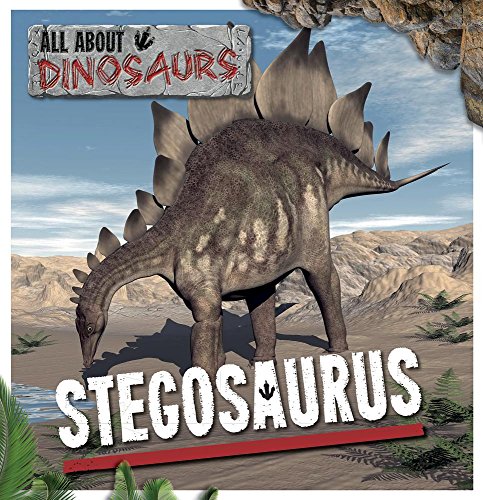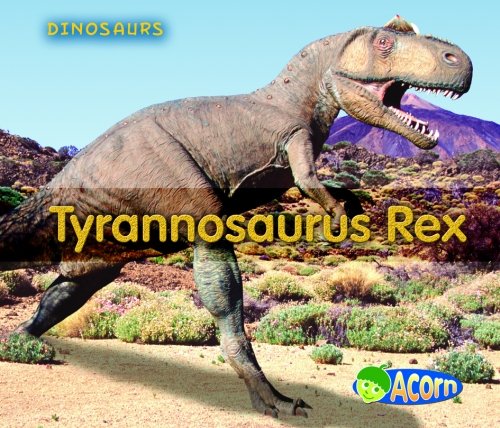-
Velociraptor
Mike Clark
Hardcover (Book Life, )None
-
Parasaurolophus
Mike Clark
Hardcover (Book Life, )None
-
Spinosaurus
Mike Clark
Library Binding (Kidhaven, Jan. 15, 2018)The Spinosaurus, with its huge sail on its back, is the largest known carnivorous dinosaur. Early readers learn interesting facts such as these through the informative main text about these prehistoric creatures. In addition, eye-catching fact boxes and detailed diagrams are included throughout the text to provide extra insight about this popular science curriculum topic. Vibrant computer-generated illustrations help readers visualize what this dinosaur looked like and its surroundings. What did a Spinosaurus eat? How did it catch its prey? These answers are waiting to be discovered in the text. R
R
-
Triceratops
Daniel Nunn
Library Binding (Heinemann, July 1, 2014)This book takes a very simple look at the Triceratops dinosaur, examining what it looked like, what it ate, how it behaved, and its special skills and features such as the horns on its head. The book also discusses how we know about Triceratops today, showing where fossils are found and how scientists put them together. I
I
-
Stegosaurus
Mike Clark
Paperback (Kidhaven, Jan. 15, 2018)The Spinosaurus, with its huge sail on its back, is the largest known carnivorous dinosaur. Early readers learn interesting facts such as these through the informative main text about these prehistoric creatures. In addition, eye-catching fact boxes and detailed diagrams are included throughout the text to provide extra insight about this popular science curriculum topic. Vibrant computer-generated illustrations help readers visualize what this dinosaur looked like and its surroundings. What did a Spinosaurus eat? How did it catch its prey? These answers are waiting to be discovered in the text. L
L
-
Velociraptor
Daniel Nunn
Library Binding (Heinemann, July 1, 2014)This book takes a very simple look at the Velociraptor dinosaur, examining what it looked like, what it ate, how it behaved, and its special skills and features such as its sharp teeth and claws. The book also discusses how we know about Velociraptor today, showing where fossils are found and how scientists put them together. O
O
-
Stegosaurus
Mike Clark
Library Binding (Kidhaven, Jan. 15, 2018)The Spinosaurus, with its huge sail on its back, is the largest known carnivorous dinosaur. Early readers learn interesting facts such as these through the informative main text about these prehistoric creatures. In addition, eye-catching fact boxes and detailed diagrams are included throughout the text to provide extra insight about this popular science curriculum topic. Vibrant computer-generated illustrations help readers visualize what this dinosaur looked like and its surroundings. What did a Spinosaurus eat? How did it catch its prey? These answers are waiting to be discovered in the text. L
L
-
Parasaurolophus
Mike Clark
Library Binding (Kidhaven Publishing, Jan. 15, 2018)Parasaurolophus is known for the trumpet-shaped crest on its head, which makes a low sound similar to the one elephants or whales make when communicating among their species. Readers learn this and other interesting facts about this dinosaur, such as what it ate, the places it called home, and how it survived among predators. This compelling material is presented through an age-appropriate text to enhance students knowledge of these prehistoric creatures. Readers uncover additional information in captivating fact boxes, colorful illustrations, and well-organized diagrams. This text keeps readers entertained while also aligning with a fundamental science curriculum topic. J
J
-
Velociraptor
Mike Clark
Library Binding (Kidhaven, Jan. 15, 2018)The Velociraptor is one of the most popular dinosaurs for young readers to learn about. In this captivating text, readers learn about the similarities this dinosaur shares with birds. These dinosaurs had hollow bones and tended to nests of eggs, although they were not known to fly. These and other fascinating facts about the Velociraptor are included in the age-appropriate main text that supports a major science curriculum topic. Additional information is included in well-organized fact boxes and detailed diagrams. Colorful computer-generated illustrations of the Velociraptor add a creative visual element for readers looking to expand their knowledge of dinosaurs. K
K
-
Pterodactyl
Amy Allatson
Paperback (Kidhaven, Aug. 15, 2017)A pterodactyl is a popular prehistoric creature because it was able to fly. Although it is not a dinosaur, it is commonly grouped with dinosaurs because of their many shared characteristics. Readers take a closer look at pterodactyls through clear main text, fun fact boxes, and helpful diagrams. As they read, they discover important information about pterodactyls behavior, appearance, and habitat. These fun facts help support elementary curriculum topics. Colorful computer-generated images fill each page, helping readers immerse themselves in a prehistoric world. This is sure to be a reading adventure early learners will want to experience again and again. K
K
-
Velociraptor
Daniel Nunn
Paperback (Raintree, Sept. 10, 2015)This book takes a very simple look at the Velociraptor dinosaur, examining what it looked like, what it ate, how it behaved, and its special skills and features such as its sharp teeth and claws. The book also discusses how we know about Velociraptor today, showing where fossils are found and how scientists put them together.
-
Tyrannosaurus Rex
Daniel Nunn
Paperback (Heinemann Library, Feb. 26, 2008)With life-like illustrations and simple text, books in this series introduce children to different dinosaurs and their unique characteristics. Children learn the features of each dinosaur, what they ate, and whether they were predator or prey to other dinosaurs. The books also introduce fossils and how they play a role in our knowledge of dinosaurs' existence. In this book, children learn about the features of Tyrannosaurus Rex, what Tyrannosaurus Rex ate, and how it attacked other dinosaurs. N
N